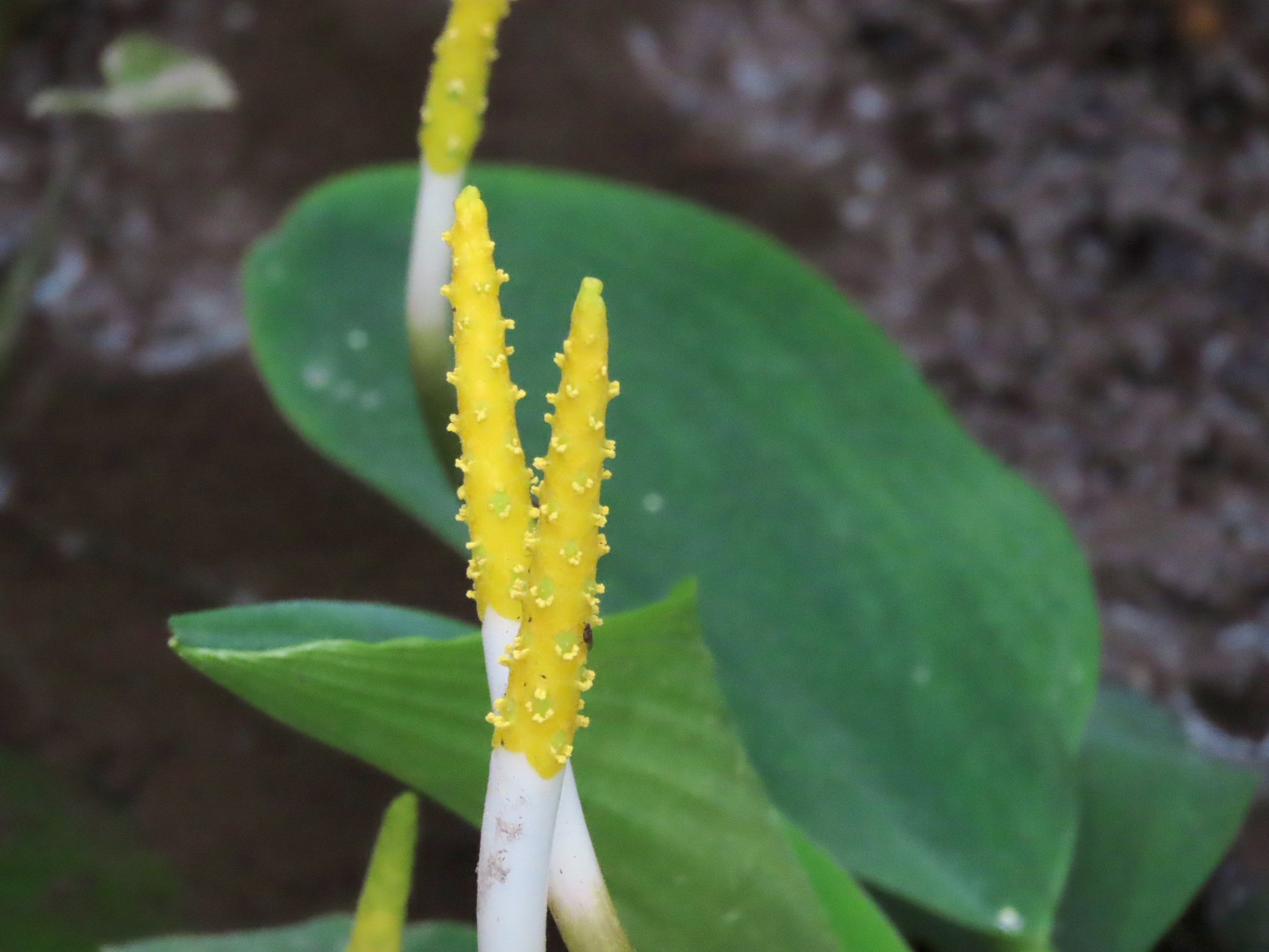
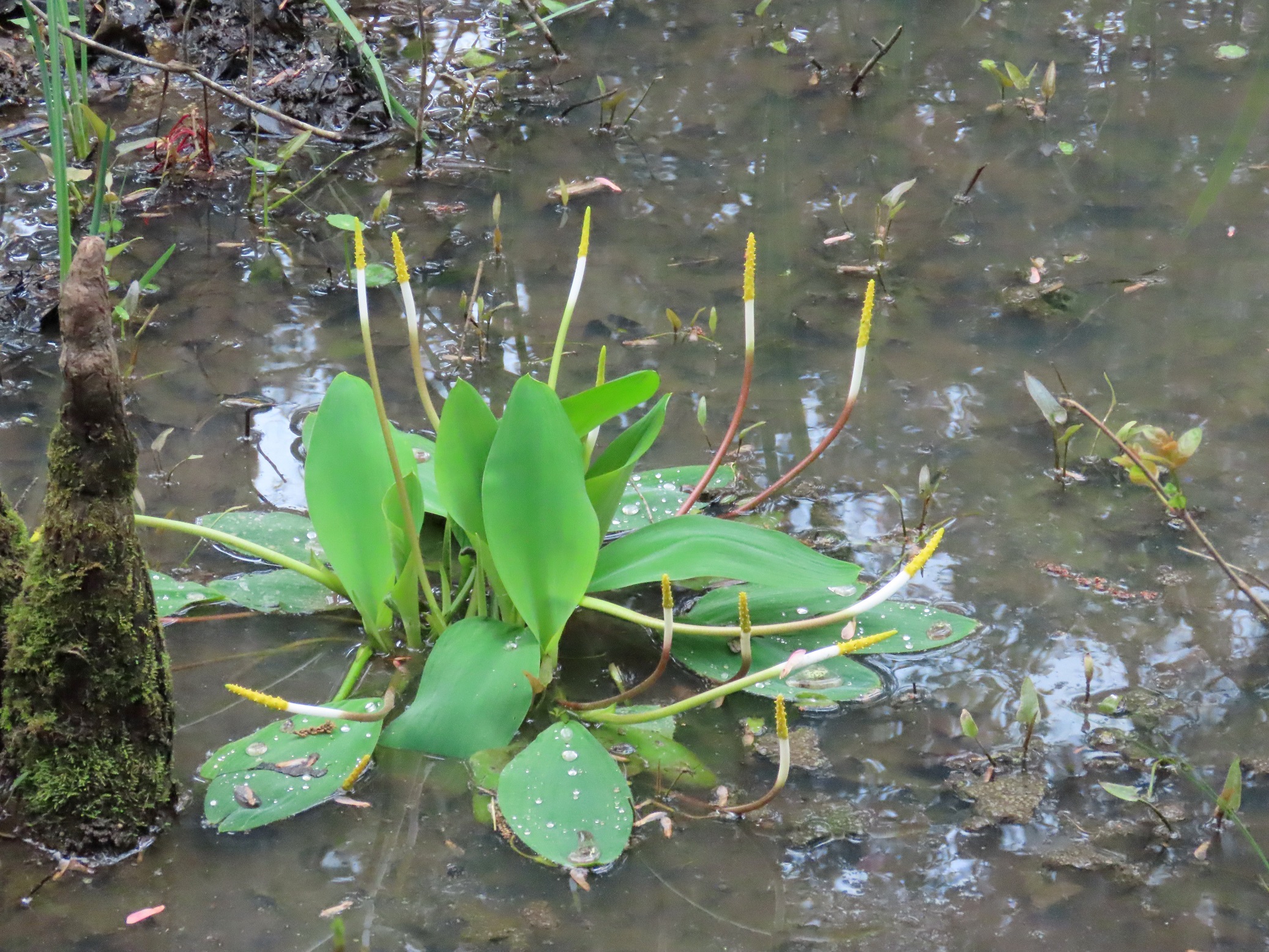
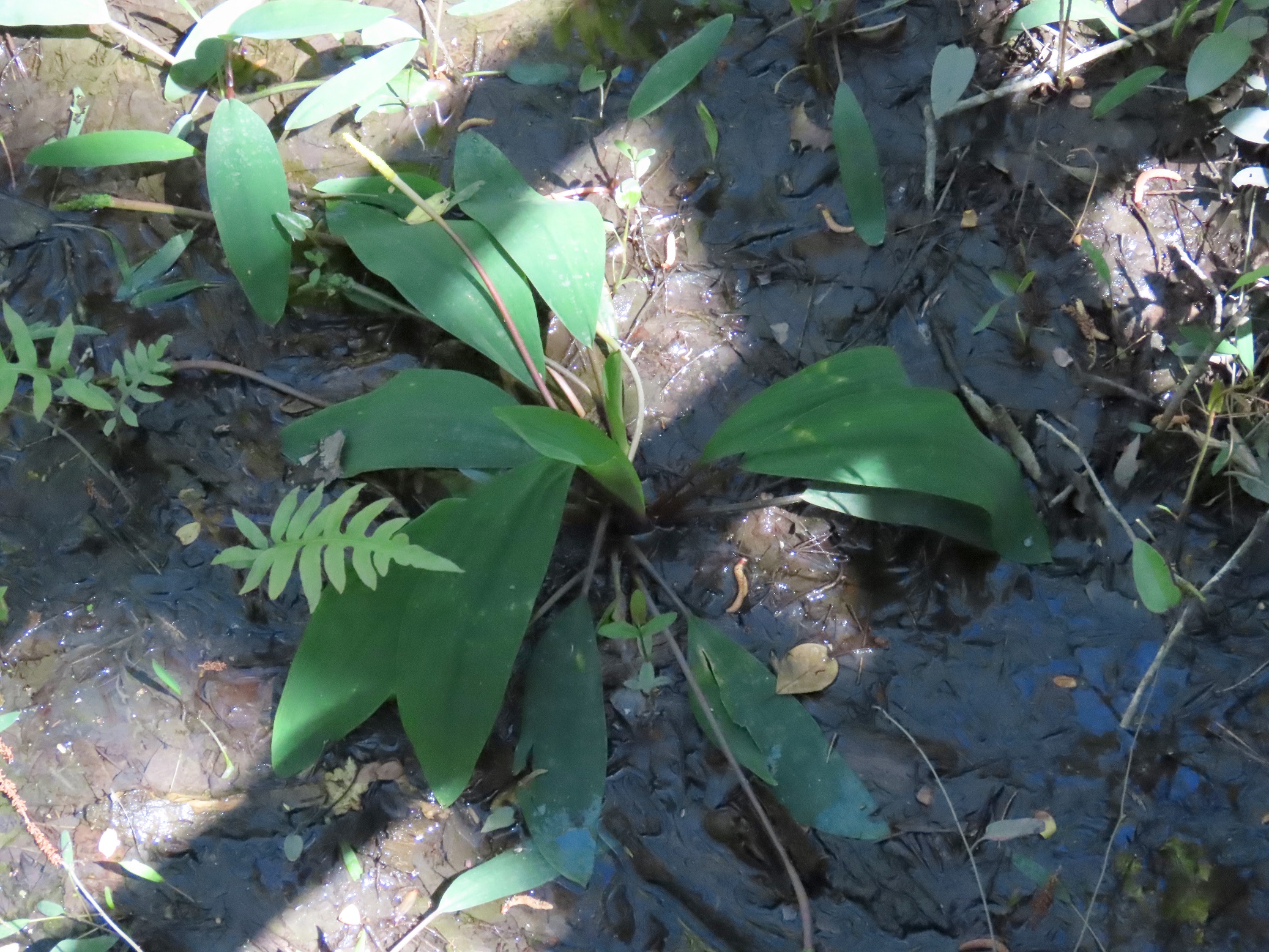
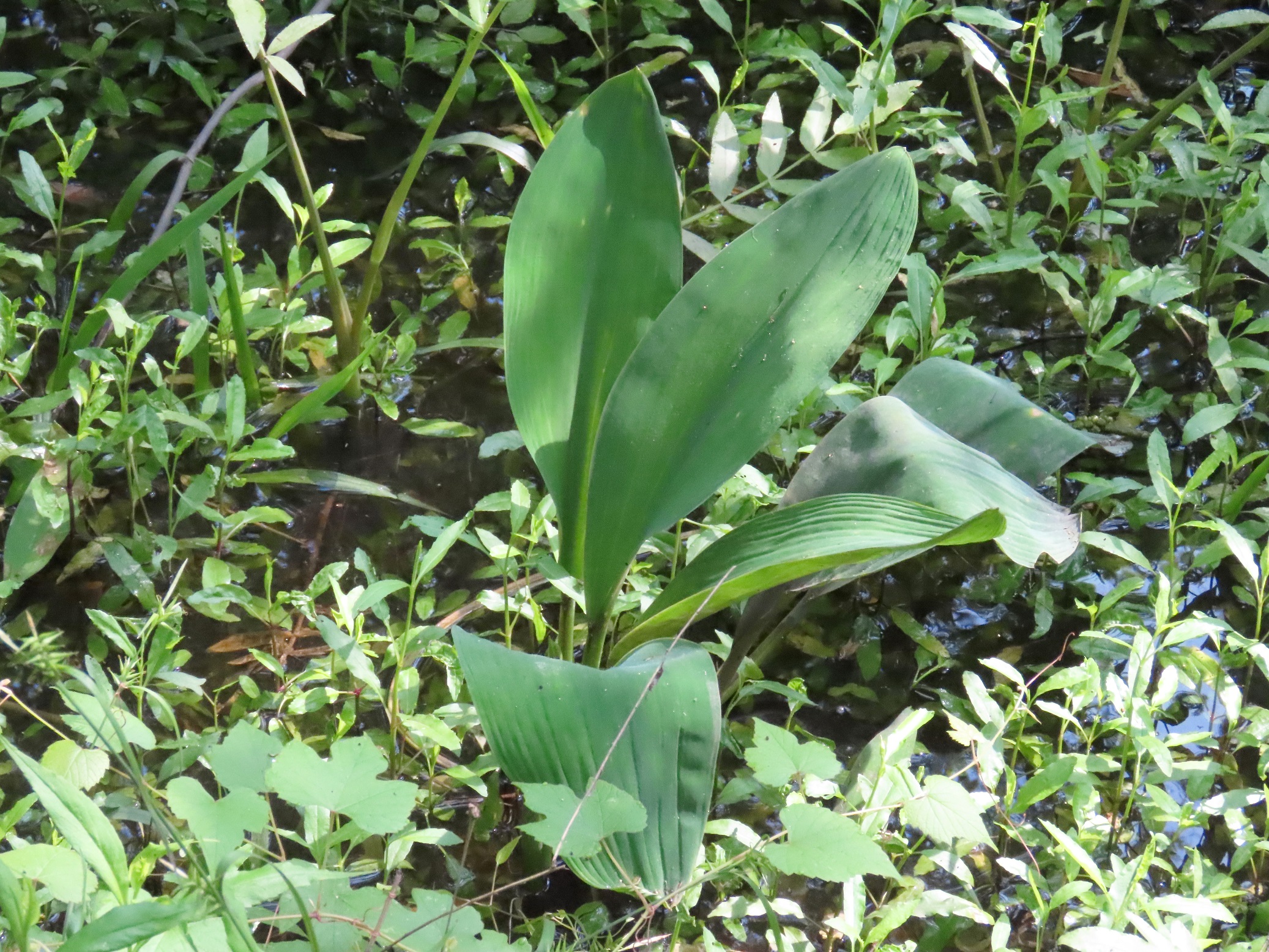
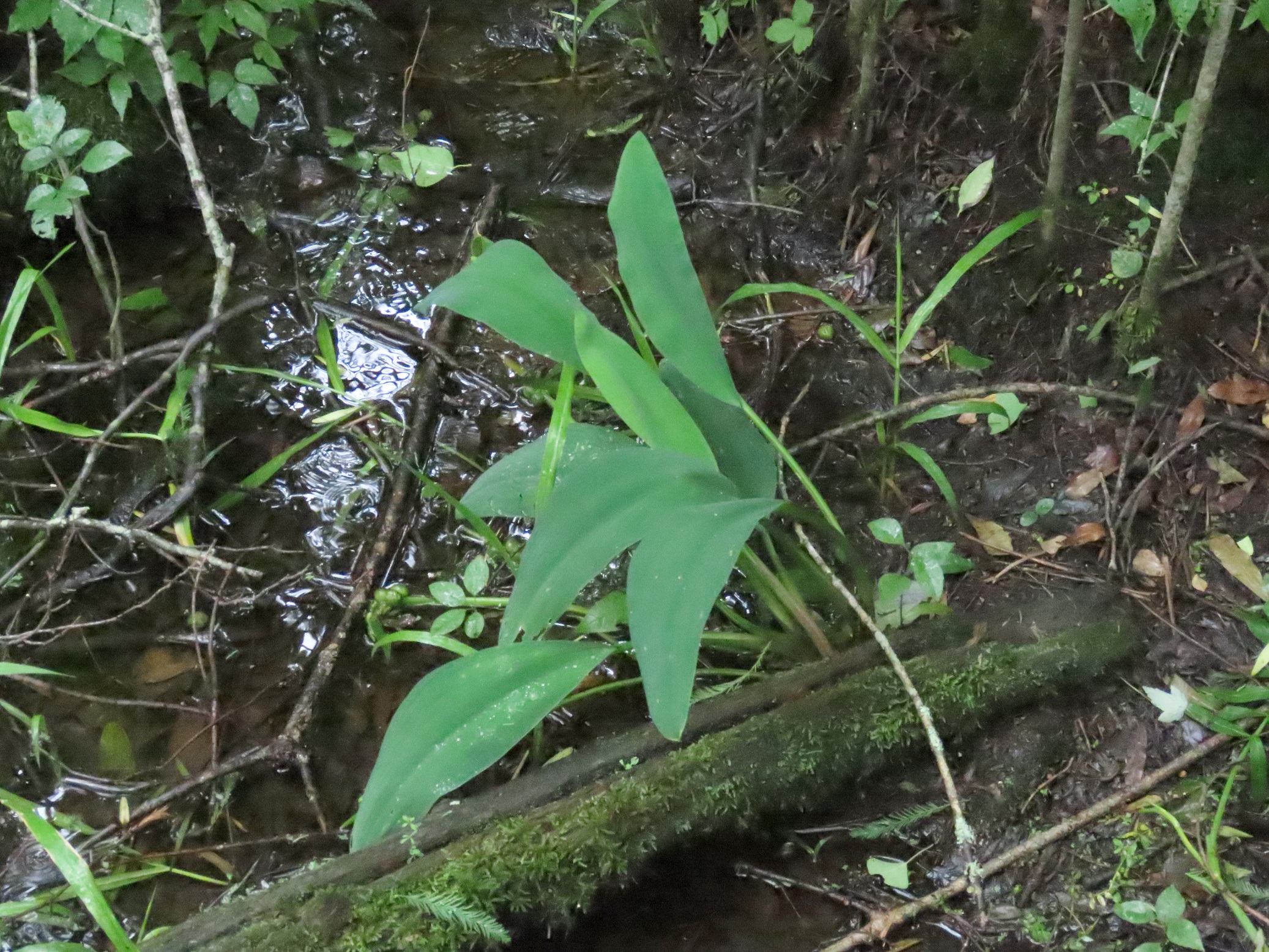
This week for Flora and Fauna Friday it’s an early to rise and always dry, wetland wildflower, Goldenclub (Orontium aquaticum).
Goldenclub is found throughout the coastal plain of the Eastern United States, from the Mississippi to Massachusetts. They inhabit bottomlands, primary floodplains, backwaters, freshwater swales, mill ponds, and other shallow and slow-moving freshwater systems. In my experience around the Sea Islands, they prefer fertile floodplain wetlands with ankle deep water and some shade throughout midday. They are perennial plants and grow most often as individual floating clumps, about two to three foot around. However, under ideal conditions, they will spread through their roots below the mucky soil to form large colonies. The leaves of Goldenclub average about a foot long, are tongue-shaped, and shaded a luxurious, deep blue-green.
That bluish color on a plant’s leaves is known more scientifically as being “glaucous”. This most often originates from a waxy leaf coating, which can be seen as a silver-lining when the leaf is viewed obliquely or in strong sunlight. This waxy coating waterproofs leaves, usually to stop them from drying out in droughty conditions or intense sunlight. So, why does a plant that lives on saturated soil in standing water need to conserve water? It doesn’t! It needs to get rid of it. The waxy coating on Goldenclub is hydrophobic, repelling water. In fact, “Never-Wet” is another common name for the plant. This hydrophobic coating combined with internal air pockets forces submerged Goldenclub leaves to buoy back up to the surface, instantly shedding any water clinging to them, so they can return to the unobstructed sunlight they need to photosynthesize. This allows them to recover from, or avoid altogether, inundation during floods and intense rains. This can smother a plant in debris if it sinks, forcing it to regrow from its roots. But our Goldenclub is weatherproofed, so it can weather storms.
Goldenclub blooms in March into early April. Its flower is one of a kind: an ivory-white stalk, finger-width, a foot or more in length, and crooked midway, that’s capped by a thumb-sized golden spike of miniscule flowers. These “golden clubs” or “bog torches” give our plant its more oft used common names. Goldenclub belongs to the Arum family, Araceae, an ancient family of flowering plants best known for their strangely shaped spike-like flowers. Arums, to include our Goldenclub, are most often pollinated by flies, beetles, and the occasional desperate bee. The flowers, once pollinated, mature into a lumpy brown-green cudgel of fruits.